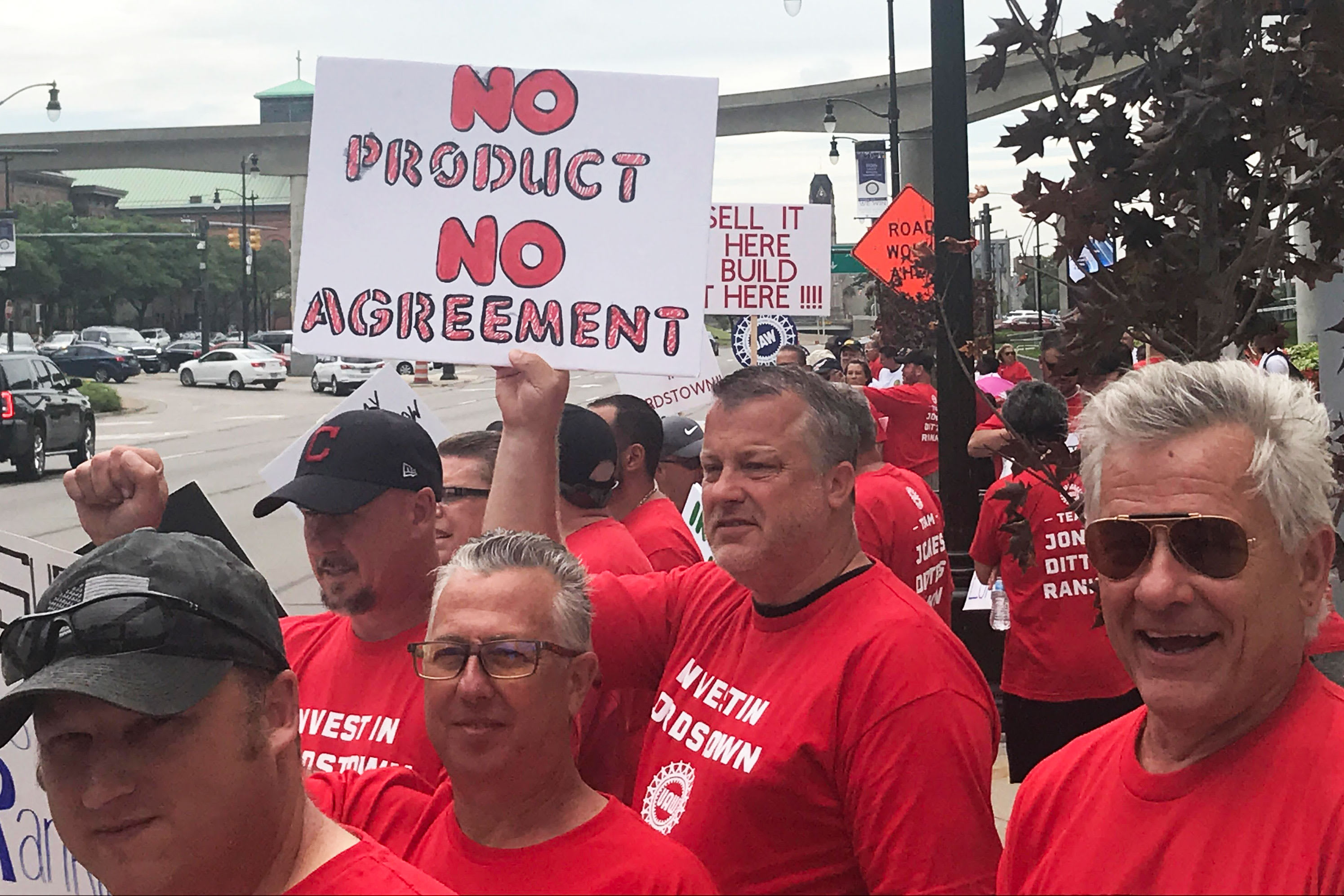BUSINESS NEWS
Here’s what could make UAW strike Saturday
DETROIT – Contract negotiations between the United Auto Workers and General Motors are expected to run down to the wire as both sides work to get a deal before their current labor agreement expires just before midnight on Saturday.A lot is at stake with several scenarios that could play out over the weekend: they could reach a tentative deal, extend their current contract by days or weeks if the negotiations are close, or the last option neither side wants: strike. The union, if the talks aren’t progressing, also could decide to move its focus to another automaker.All parties have been preparing for what are expected to be the most contentious negotiations in at least a decade amid a slowdown in auto sales, a volatile trade environment and a widening federal probe into union corruption that escalated Thursday as UAW Region 5 Director Vance Pearson was arrested and charged as part on the investigation.Here are some of the sticking issues that could cause factory workers at GM, Ford Motor or Fiat Chrysler to walk the picket line as early as Saturday:Health careDespite ballooning health-care costs for many Americans and companies, UAW members with the Detroit automakers have retained a golden parachute when it comes to medical coverage.With little or no co-pays or deductibles, the auto workers only pay roughly 3% of their costs. That compares with the automakers’ salaried workers, who pay roughly 20% to 30%, and the average U.S. worker at 28%, according to the Henry J. Kaiser Family Foundation.”Health care stands alone as not only the most costly benefit on a per-hour basis but also the benefit that has the most substantial year-over-year cost increases,” Kristin Dziczek, vice president of industry, labor & economics at the Center for Automotive Research, wrote in a feature Monday on the organization’s website.Ford’s health insurance costs for its 56,000 hourly workers in the U.S. is expected to top $1 billion for the first time next year, while GM and Fiat Chrysler aren’t expected to be far behind. GM paid roughly $900 million for its hourly workers in 2018.While the automakers may push to shift some of the costs to their unionized workers, Dziczek believes concessions are “unlikely” in 2019. Instead, the parties may “explore other cost-containment and quality-of-care improvement measures,” she said.PayMany traditional UAW members received their first hourly pay raises in a decade four years ago that many members expect to add onto during these negotiations. Part of that push is shortening, if not eliminating, an eight-year “grow-in period” for new hires.Under the current contracts, starting pay for hourly production workers ranges from roughly $17 to $30 an hour. It takes production workers eight years to reach the top wage tier, which is contrary to the union long supporting “equal pay for equal work.” The “in-progression” wage structure was added to the contracts four years ago as an alternative to a two-tier system.Union leaders earlier this year also received 31% annual salary increases. That compares with two 3% wage increases for senior rank-and-file workers in 2015 and 2017.On the other side of the table, the companies want to narrow their all-in labor costs, which include health care and other benefits, to be more in line with nonunionized workers at foreign automakers producing in the U.S.GM on average pays $63 an hour for its factory workers, while Ford pays $61 and Fiat Chrysler is at $55. That compares with $50 per hour for nonunionized employees at foreign automakers with factories in the U.S. Narrowing that gap is a main objective for the Detroit Big Three.Lowering their all-in labor costs also would assist the companies with their per-vehicle labor costs, which have started rising after years of decline. According to the Center for Automotive Research, GM’s labor costs per vehicle last year were $2,700 – about $100 more than Ford and $180 higher than Fiat Chrysler.”In an era of solidly profitable operations, the automakers are seeking to contain labor cost growth while the UAW is looking to make economic gains and secure its members’ jobs and future income,” Dziczek said.Profit-sharingThe UAW in 2009 agreed to benefit cuts and more substantial profit-sharing in lieu of annual wage increases as a result of the Great Recession and the government-backed bankruptcies of GM and then Chrysler.UAW members have greatly benefited from profit-sharing, however amid fears of a recession and slowing U.S. vehicle sales, the union is expected to push for more fixed bonuses in addition to profit-sharing bonuses.Under the current four-year deals, the automakers have paid more than $4 billion in profit-sharing bonuses to UAW members. The record payments, which are based on each company’s annual earnings in North America, have averaged roughly $20,500 per worker at Fiat Chrysler, $33,400 at Ford and $45,500 for GM since 2015.The Detroit automakers have been happy with profit-sharing because it allows workers to share in the profits without adding fixed costs to their businesses.JobsOne of the UAW’s top priorities during contract negotiations is always creating new jobs to assist in growing its membership. Adding jobs is expected to be a particularly contentious issue between GM and the union.Fiat Chrysler and Ford have significantly increased their U.S. unionized workforces in recent years, however GM has essentially been stagnant amid increasing production in Mexico and cuts to passenger car production in the U.S.Fiat Chrysler, which is in the process of adding a new assembly plant in Detroit, nearly doubled its hourly unionized workforce over the last two contracts with the UAW. Since 2011, the Italian-American automaker has almost doubled its U.S. workforce to about 44,300 people.That compares with Ford at roughly 55,500 workers, a 35% increase since 2011, and GM at an estimated 49,300 workers – a 2% increase over the last eight years.Temp workersThe use of temporary workers has been a significant point of contention between the UAW and Big Three Detroit automakers for years.Temporary workers receive fewer benefits and lower wages, despite paying union dues and becoming members of bargaining units for the UAW after 90 days.While percentages of temporary workers fluctuate based on the time of year, temp workers represent about 6% to 7% of the hourly union workers at the Detroit automakers. That compares with roughly 20% or more at the foreign automakers in the U.S.Automakers traditionally use temporary workers to assist during product launches and increases in output as well as to fill in for full-time employees during high times of absenteeism for vacation and illnesses.However, the union has contended automakers have sometimes misused temporary workers, making them into “perma-temps,” a temp worker who has spent years at the company.This is expected to be another thorny issue particularly for GM, which was sued by the union in January for alleged breach of contract over the use of temporary workers at its Fort Wayne truck plant in Indiana.
Source link











